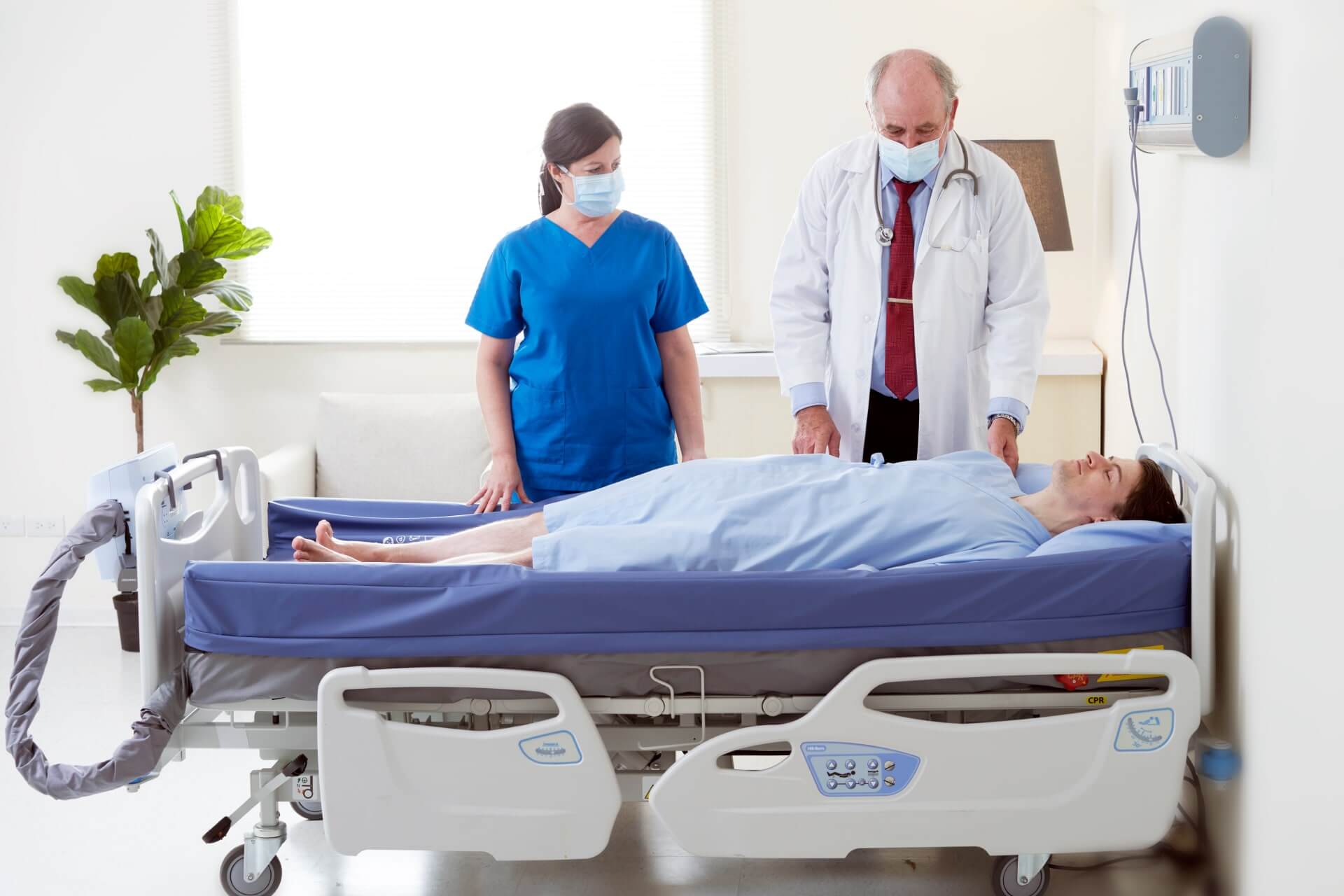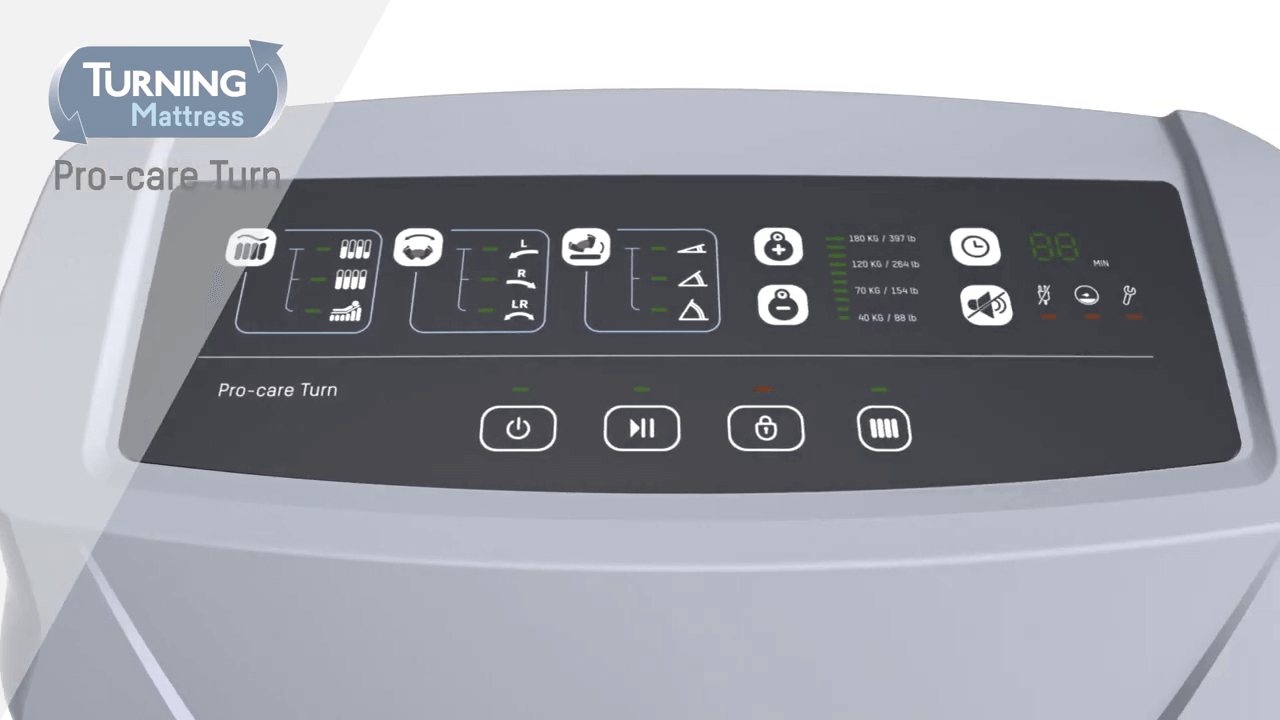The Pressure Problem

Shockingly, pressure ulcers cost the NHS more than £3.8m every day; 1% of the total NHS spend in 2022/3.1, 2 Moreover, the NHS paid out £23.5m in associated litigation damages in 2021/22.3
Pressure ulcers are blisters or open wounds, forming when pressure is applied to the same area of skin for a period of time.4, 5
Annually, around 700,000 people in the UK will develop a pressure ulcer.6 As older people are a distinct risk group, they have a particular impact in community care settings, where individuals aged 65 and over make up 82.1% of the population.7
They also result in longer hospital stays, by 5 to 8 days.6 This is especially detrimental for elderly patients, leading to an increased risk of falling, sleep deprivation, infections, and even mental and physical deconditioning.8
Overall, pressure ulcers are regarded as a measure of care quality.9 However, prevention education is minimal, care is time consuming, and suffers from staff shortages, which negatively impacts staff morale. 6, 10
Fortunately, SSKIN is embedded in the NHS for pressure ulcer prevention.11 In particular, at-risk individuals should be repositioned every 4 to 6 hours.12 Many care settings are therefore required to manage repositioning schedules, and provide advice and assistance to those at risk.13
Unfortunately, the physical strain of moving patients can significantly impact staffing levels, with back and musculoskeletal problems accounting for 17% of staff sickness days in the NHS.14 Physical repositioning also deprives patients of sleep, impacting recovery, as sleep is vital for maintaining healing, and is essential for quality hospital experiences.15
Encouragingly, implementing sufficient prevention can reduce pressure ulcers by up to 87%, with a cost saving of £513,000, and a 362-day reduction in the number of bed days per centre. This reduces the impact on staff, while addressing overall quality of life.6, 9
At Wellell, we’re dedicated to raising societal and healthcare quality. Our range of air mattresses prevent pressure ulcers while decreasing caregiver workload, automating labour-intensive procedures and complex therapy workflows.
Our Optima Turn turning mattress, one of our Optima Series products, provides automatic and timer-controlled turning up to 30° supported by alternating pressure, multiple pressure relief therapy options and manually deflatable air cells for heel relief care, all easily accessible through the intuitive pump interface, streamlining patient handling and caregiver workload.
Contact us to learn more about this innovative pressure injury solution. Let’s work together to provide better treatment.
1.
National
Institute for Health and Care Excellence, 2014. Pressure
ulcers: prevention and management: Introduction [Online]. London: NICE. Available from: https://www.nice.org.uk/guidance/cg179/chapter/Introduction [Accessed: 18 July 2023]
2. The King’s Fund, 2022. Department of Health and Social Care Spending; Real terms in 2022/23
prices [Online]. London: The Kind’s Fund. Available from: https://www.kingsfund.org.uk/projects/nhs-in-a-nutshell/nhs-budget#:~:text=Planned%20spending%20for%20the%20Department,for%20spending%20on%20health%20services [Accessed: 18 July 2023]
3. NHS Resolution, 2022. Freedom of Information Request# 5677 [Online]. London: National
Health Service. Available from: https://resolution.nhs.uk/wp-content/uploads/2022/12/FOI_5677_Bedsores-or-Pressure-Sore.pdf [Accessed: 18 July 2023]
4.
National
Institute for Health and Care Excellence, 2014. Pressure
ulcers: prevention and management: Information for the public: What is a pressure
ulcer? [Online]. London: NICE. Available from: https://www.nice.org.uk/guidance/cg179/ifp/chapter/what-is-a-pressure-ulcer [Accessed: 18 July 2023]
5.
NHS, 2023. Pressure ulcers (pressure sores) [Online]. London: National Health Service. Available from: https://www.nhs.uk/conditions/pressure-sores/.
[Accessed: 18 July 2023]
6. Wood J, Brown B, Bartley A, et al. 2019.
Reducing pressure ulcers across multiple care settings using a collaborative
approach. BMJ Open Quality [Online],
8(3). Available from: https://bmjopenquality.bmj.com/content/8/3/e000409 [Accessed 18 July 2023]
7. Office for National Statistics, 2023. Census 2021: Life expectancy in care homes,
England and Wales: 2021 to 2022 [Online]. London: Office for National
Statistics. Available from https://www.ons.gov.uk/peoplepopulationandcommunity/birthsdeathsandmarriages/lifeexpectancies/articles/lifeexpectancyincarehomesenglandandwales/2021to2022#:~:text=According%20to%20the%202021%20Census,focus%20on%20this%20age%20range. [Accessed 18 July 2023]
8. NHS England, 2018. Reducing length of stay [Online]. London: NHS England. Available
from https://www.england.nhs.uk/urgent-emergency-care/reducing-length-of-stay/#:~:text=Spending%20a%20long%20time%20in,sometimes%20mental%20and%20physical%20deconditioning [Accessed 18 July 2023]
9. Chamanga, E., 2016. Addressing pressure ulcer
issues. Independent Nurse: Clinical
[Online], 26 June. Available from: https://www.independentnurse.co.uk/content/clinical/addressing-pressure-ulcer-issues/ [Accessed 19 July 2023]
10. Leading Change, Adding Value, 2019. The Atlas of Shared Learning Case Study:
React to Red – Reducing pressure ulcers in care home settings [Online].
London: NHS England. Available from https://www.england.nhs.uk/atlas_case_study/react-to-red-reducing-pressure-ulcers-in-care-home-settings/ [Accessed 19 July 2023]
11.
NHS
Improvement, 2018. Pressure ulcer core curriculum [Online]. London: National Health Service. Available from: Pressure-ulcer-core-curriculum.pdf
(england.nhs.uk) [Accessed: 19 July 2023]
12.
National
Institute for Health and Care Excellence, 2019. How to
prevent pressure ulcers [Online].
London: NICE. Available from: https://www.nice.org.uk/media/default/about/nice-communities/social-care/quick-guides/pressure-ulcers-quick-guide.pdf [Accessed: 19
July 2023]
13. National
Institute for Health and Care Excellence, 2015. Pressure
ulcers: Quality statement 5: Advice on repositioning [Online].
London: NICE. Available from: https://www.nice.org.uk/guidance/qs89/chapter/quality-statement-5-advice-on-repositioning. [Accessed: 19 July 2023]
14. Copeland, A., 2022. NHS Sickness Absence: let’s
talk about mental health The Kind’s Fund
[Online]. 1 October. Available from: NHS sickness absence | The King's Fund
(kingsfund.org.uk) [Accessed:
19 July 2023]
15. DuBose, J.R., and Hadi, K., 2016. Improving patient
environments to support patient sleep. International Journal for Quality in Health Care [Online], 28(5), pp.540–553. Available from https://academic.oup.com/intqhc/article/28/5/540/2499478 [Accessed: 19 July 2023]


